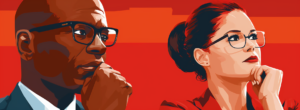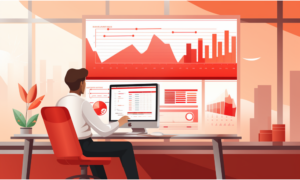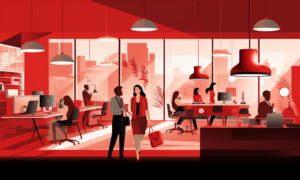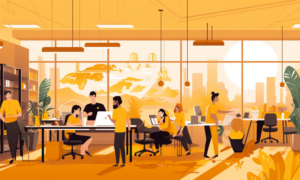HR strategy in 2020: The big questions
- 11 Min Read
HR strategy has taken on a new level of significance in 2020, and the workplace we once knew is now practically unrecognizable. HRD Thought Leader Terence Mauri addresses this in a final piece of 2020, looking back on the year and answering some of the most burning questions.
- Author: Terence Mauri
- Date published: Dec 22, 2020
- Categories

Whilst disruption has been the defining element, 2020 has been a revolutionary year for HR strategy. From strategic overhauls to technological transformation, additional visibility plus new demands for support, leaders in every sector have experienced significant change, with progress only set to continue in the time ahead.h
With this in mind, HRD Thought Leader Terence Mauri takes a retrospective journey through 2020, answering some of the key questions that have emerged.
What has been your biggest learning from the year 2020 and how has it transformed the way you view HR strategy now?
A CEO said to me recently that 2020 is cancelled. I disagree. I think this year has been a once-in-a-lifetime opportunity to reimagine workforce capability and automation, thanks to the rise of WFH, WFA and the ‘nowhere office’. In some ways, 2020 is a gateway or portal from one world to another – a liminal space that allows leaders to break free of old assumptions about the world and discover better ways of scaling an agile, resilient and sustainable future.
There are decades where nothing happens and there are weeks where decades happen. As CEO of Microsoft, Satya Nadella said, ‘we saw 2 years of digital transformation in 2 months’.
I personally learnt that a crisis is also an accelerant for learning, growth and reinvention. This year has shown me that it is possible for leaders to win with empathy, and that wealth without health is pointless. In the current climate of global pandemic and economic uncertainty, organizations’ capacity to focus on both the financial physical and mental health of their employees has never been more vital.
If you had to pick three highlights from the world of work from this year, what would those be and why?
Now is the time to challenge our limits, not limit our challenges. I call it ROI. Not just return on investment but ‘return on intelligence’. As leadership and business models decay at a faster rate, my top three highlights from the world of work this year are:
Digital everywhere: Governments and organizations finally shifted from doing digital (incremental) to being digital (cloud first). However, with only 20% of organizations in the cloud, I think the next five years will see a big focus on CEO’s re-platforming companies and even whole industries to the cloud. This trend line will accelerate as countries increase their spending on IT from 5-10% of GDP.
Connected ecosystems: The global pandemic showed us that everything and everyone is connected, and the numbers tell the story. According to McKinsey, ecosystems represent a revenue pool potential of over $60 trillion dollars by 2027. The future is ‘eco, not ego’ with Costa Rica-like ecosystems that capture and deliver value beyond our imagination and new leadership and talent models that are ‘humanity-first’. Innovation travels faster through networks than hierarchies. Just look at how BioNTech’s Ugur Sahin and Ozlem Tureci developed a COVID-19 vaccine in less than a year; a truly remarkable feat of business and science.
Distributed leadership: the pandemic showed that for many organizations, the old work and talent models are broken. The future of work is arriving faster than ever before. Leaders are moving from command and control to care and co-creation. The best way to outpace disruption is through workforce capability: more human-led, but tech-enabled, intentionally diverse, purpose-driven, operationally-nimble and built for speed. It’s time for leaders to go big on meaning and remember that leadership is about ‘we, not me’.
You have asserted that uncertain times call for organizations to build the resilience, trust and courage to re-imagine new ways of working. Tell us more about it.
Leaders must master the new logic of competition. You’re competing on learning, eco-systems, physical and digital (phy-gital), imagination and resilience. Every organization must now be in a perpetual state of beta, creating zero-friction, personalized and predictive experiences for customers on the outside and workers on the inside. General Motors (GM) CEO Mary Barra, for instance, made a fast pivot to producing masks and ventilators and accelerated it’s transformation to an all-electric future.
AirBnB CEO Brian Chesky is my nomination for most resilient leader of 2020. It took 12 years to build the home-rental platform and they lost almost everything in six weeks. However, AirBnB, like most agile and resilient businesses has what I called ‘the Benjamin Button effect’. This means three things that every leader should pay attention to: visionary capital, velocity and vertical integration. Today, AirBnB is valued at over $100bn, and continues to turn adversity into advantage.
Similarly, Twitter CEO Jack Dorsey has taken the bold move to give the entire workforce the flexibility to work from anywhere. The bottom line is that behind the scenes, digital superpower companies such as Amazon, Google, and Microsoft have already re-engineered their business models and entire operating models around software, data, and AI to power a completely new breed of organization. Now is not the time to adopt a ‘wait-and-see’ strategy. As agents of change, it’s time for leaders to rip up the rulebook on leadership and move beyond disruption.
How did the year 2020 transform the very definition of leadership? What were some of the biggest shifts that you observed?
2020 was an accelerant for making leadership future-fit for a world of hyper-change. Necessity breeds innovation, and it is clear that we are already embracing new ways of working and living. Leaders are transforming their structures to attract new generations, reinvigorate their businesses, and promote employee health and wellbeing. In short, difficult circumstances are challenging leaders to think and act differently. Some examples of key shifts include:
- Control to co-creation
- Economics to empathy
- Efficiency to intelligence
- Hierarchies to unbossed
- Money to meaning
My definition of leadership is ‘a moral duty to make a difference and harness human potential to tackle the biggest challenges on the planet’.
What are some of the key workplace trends you see emerging in 2021?
There are many, from diversity, equity and inclusion (DEI) to the race to reskill and upskill, and humans and machines working more collaboratively. However, the big workplace trend I want to discuss is wellbeing. The global pandemic has turned peoples’ working lives upside down, and for many has led to feelings of being overloaded and overwhelmed by back-to-back Zoom meetings. According to a recent global survey by Hack Future Lab, 89% of workers say they struggle to focus on what really matters, and multi-tasking consumes 40% of your day. The Japanese have a saying for this: Karoshi. That literally means ‘death from overwork’.
Our wellbeing and mental health is under attack. Information overload, digital distractions and the cult of accessibility mean that for many of us, the default setting is ‘always on’. The WHO has declared ‘burnout’ to be an occupational phenomenon that undermines how well people perform at work. For HR and business leaders, conversations about our collective future and its impact on our wellbeing dominate the airwaves.
In 2021 and beyond we’ll see a long-overdue acceleration of organizations caring about employee wellbeing from the day they start to the day they finish. In fact, thriving employees defined as flourising in terms of wellbeing, mental health and career, are three times more likely to work for a company that they perceive as caring.
Key takeway: People want to feel more alive at work. Personalized well-being programs will become the norm for workers. Leaders who overlook this critical workplace trend in 2021 line will ultimately erode their workforce capability, and lose out on the war for talent.
As we step into 2021, what are those qualities or traits that would inspire leaders to thrive in this new world?
The pandemic turned our leadership models upside down. It forced leaders to rethink the nature of work, the workplace and the workforce. In many ways, the pandemic was an accelerant for change for trust, ethics and transparency and has given leaders a unique opportunity to reimagine a more resilient and sustainable future.
Stuart Crainer, co-founder of Thinkers50, said: “The focus of leadership over recent years has been on the impact of AI, Big Data and other technologies on the practice of leadership. How can and should leaders utilise technology? Where does technology leave traditional core leadership skills such as judgement?
“The pandemic has changed the emphasis. The leadership agenda over 2021 and beyond will focus on people as never before. Leaders will have to figure their way through a complex array of issues — more people working remotely, fast-changing and often declining markets, uncertainties piled on uncertainties. Listening, empathy and emotional intelligence will need to be at the fore for leaders in the post-COVID era. For many, these will be new and sometimes impossible skills, but they are and will remain critical.”
Key takeaway: To win next year and beyond, leaders must prioritize trust along growth and profitability.
You have been speaking a lot about “winning with empathy with compassion, ethics and transparency”. Tell us more about how leaders can do this whilst ensuring business continuity?
Trust is a leader’s North Star for prioritizing all ethical and moral decisions. It’s not just about career, it’s about legacy. With a new, more responsible mandate emerging, the challenge for business is to rethink what makes corporations successful. Although most leaders agree that the organization’s purpose should extend beyond shareholder primacy, only 35% deliver on a multi-stakeholder model today.
Empathy sits at the heart of a new mandate. With so many unknowns, how can companies, individuals and society as a whole win? By combining left-brain understanding of commercial realities and their knock-on effects, with right-brain skills such as intuition and creativity to find solutions. Only then can we turn our insight and intelligence into inclusive prosperity. Thriving employees are twice as likely to work for an organization that effectively balances EQ and IQ in decision-making — something less than half of companies get right today. Moving the needle on this agenda means putting human and economic metrics side by side, caring enough to place responsibility for long-term futures above short-term gains, and creating space for people to be their whole selves. This is empathy, and it is needed for winning in an evolving world.
The C-suite regards scaling empathy as a top talent investment capable of driving business advantage, and yet according to Hack Future Lab, just 34% of HR and business leaders are investing in this as part of their future of work strategy. Why? In some part because employees are more likely to feel a strong sense of what the late psychiatrist Oliver Sacks called ‘the 3B’s’: belief, belonging and becoming. That is, at the deepest human level, humans need something to believe in. Companies such as Twitter and games developer King report that when empathy is rated as a strength, employees are twice as likely to say their organization is transparent about which jobs will change, and rank uncertainty last in reasons for feeling burnt out. Employees who work in empathetic cultures are also three times as likely to be satisfied with the company, with no plans to leave.
And finally, what is the one workplace trend that will rule 2021?
Transformation leader, The Brightline Initiative, said: “transformation has to be top of any organizational agenda. Every company must dedicate itself to change as an ongoing process, not a one-time event.”
The 20th century was about scaling efficiency and doing things right, rather than doing the right things. The winners of tomorrow will scale intelligence, with the race to reskill and upskill being a top leadership priority. Every organization says it wants to outpace disruption with capability, which requires the cultivation of a learning mindset at both the individual and organizational level, and another look at goals and the setting aside of both time and financial investment for learning. Today, just one in three leaders say they are investing in future learning, workforce upskilling, and reskilling as part of their strategy for the future of work.
Data aggregators such as Humu can help quantify the impact of emerging technologies on existing jobs, and matching skills from one job family to another to identify transferable skills. Further, the use of digital twins (or “mirror worlds”) and scenario modeling is on the rise to support workforce strategy design and planning. By visualizing scenarios, companies can bring to life the implications of choices on the bottom line and on the workforce.
Key takeaway: In 2021, mental retooling needs to happen at scale throughout the enterprise. Royal Dutch Shell, for example, recently announced it is expanding an online program to teach AI skills. So far, 2,000 of its 82,000 employees have expressed interest or have been approached to participate.
Terence Mauri is founder of Hack Future Lab, a global management think tank helping leaders to win the future. He is the #1 bestselling author of The 3D Leader: take your leadership to the next dimension and has been described as ‘an influential and outspoken expert on the future of leadership’ by Thinkers50, the global ranking authority of top management thinkers.









